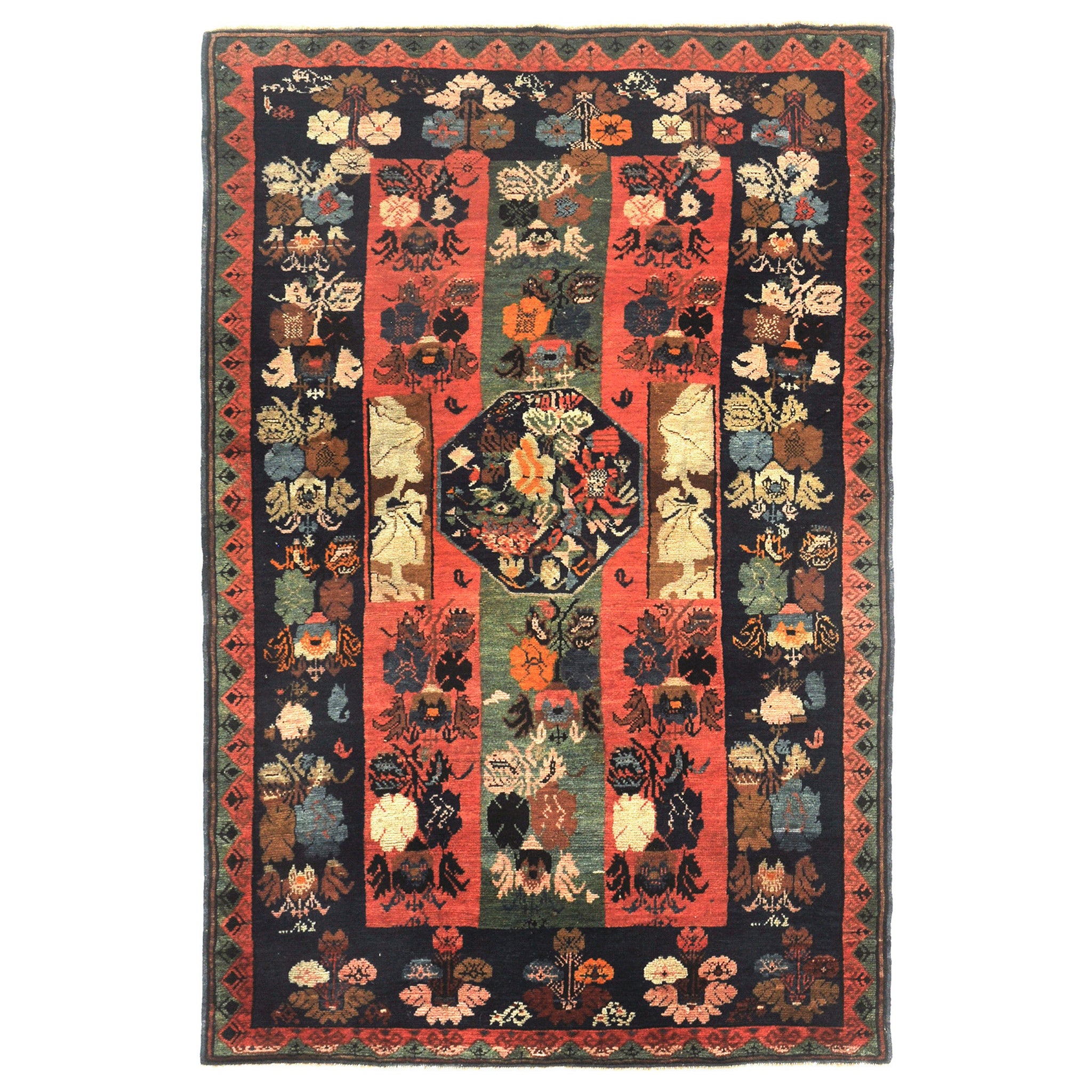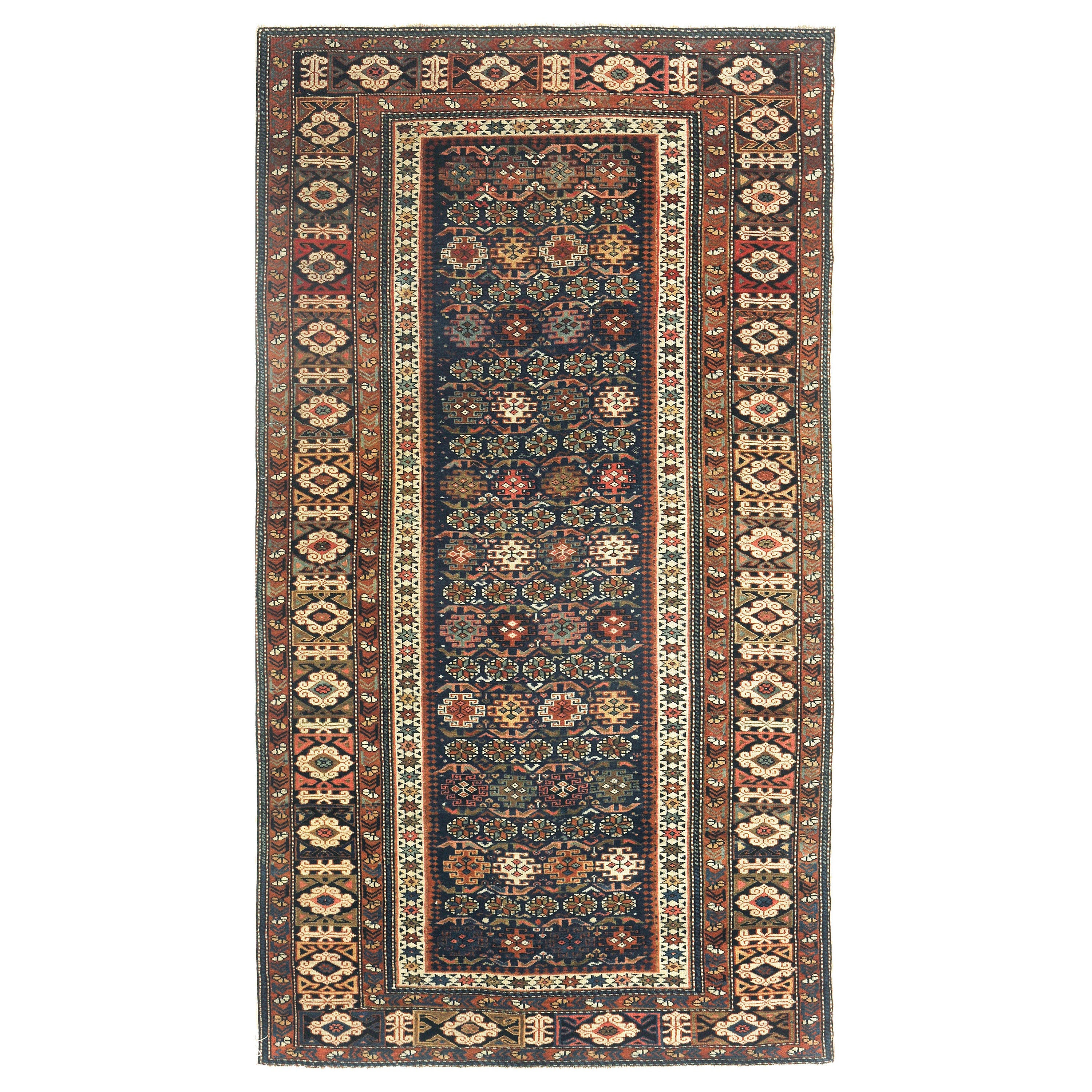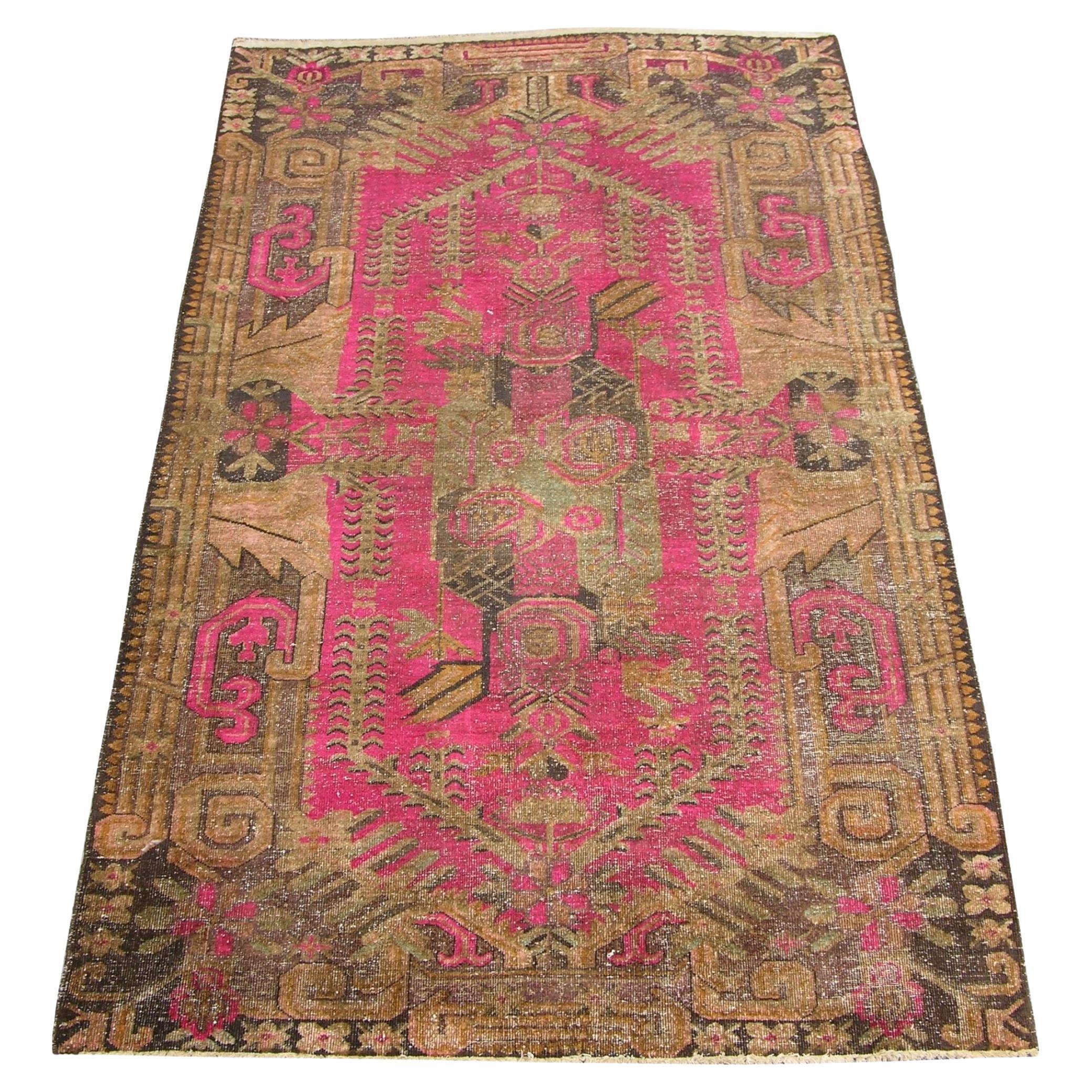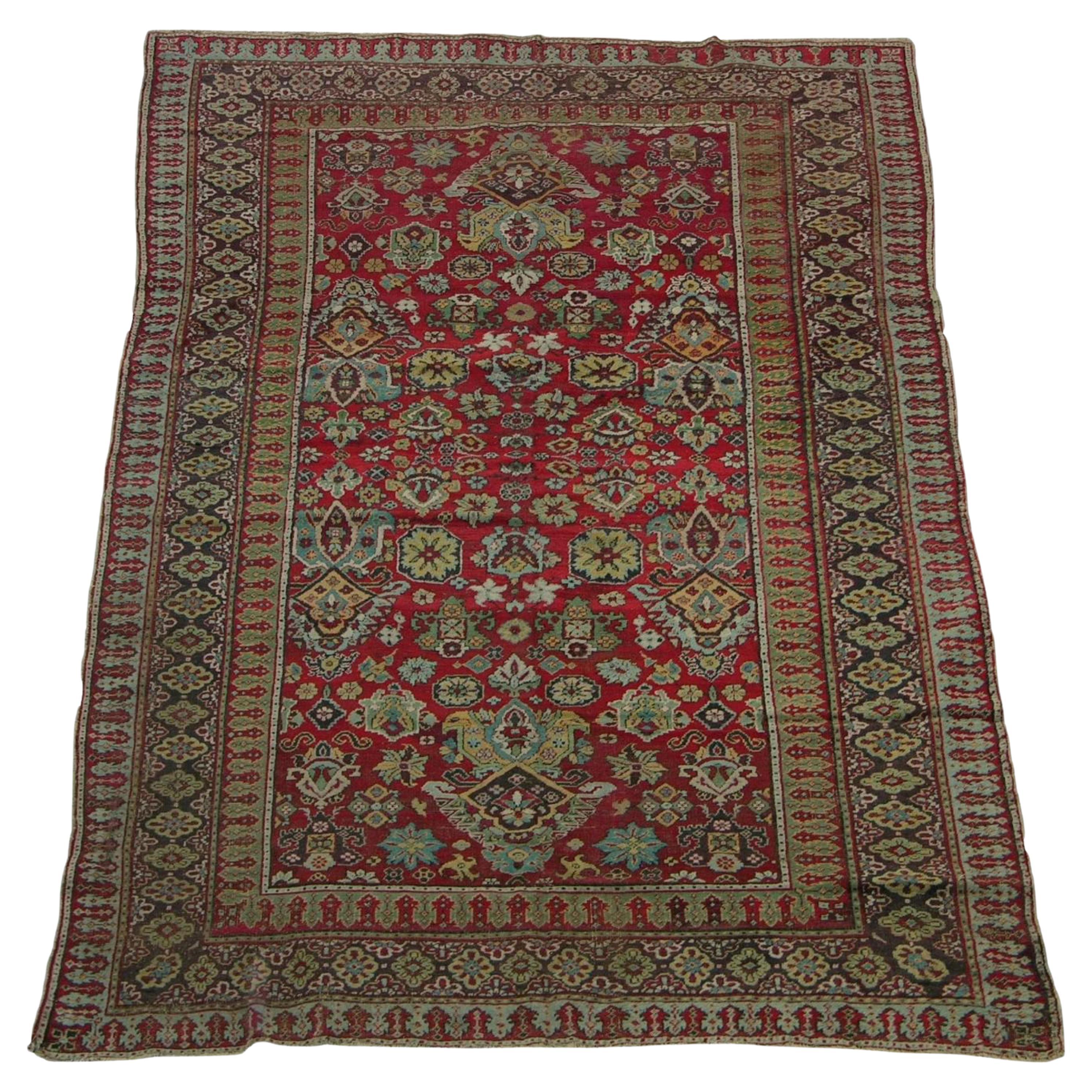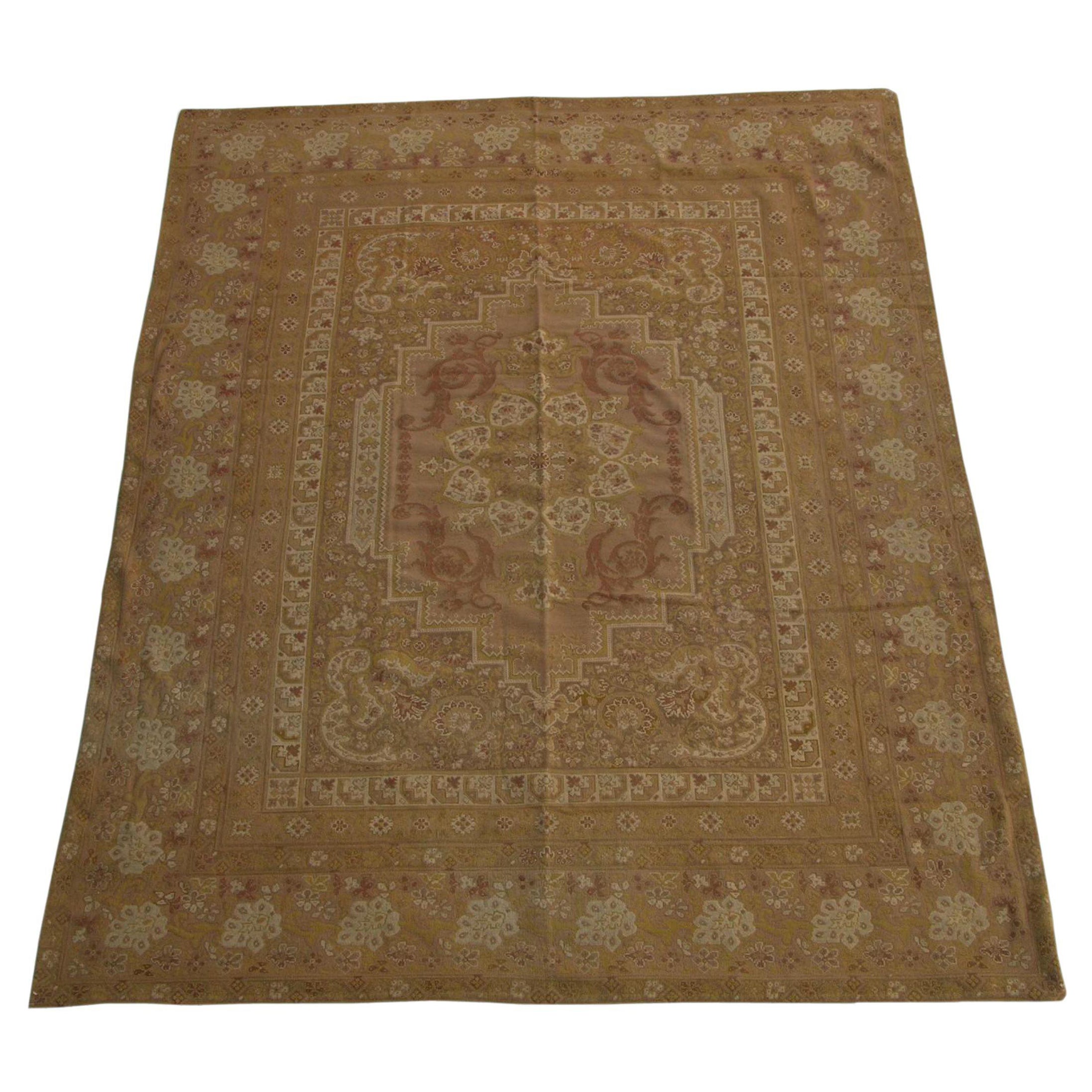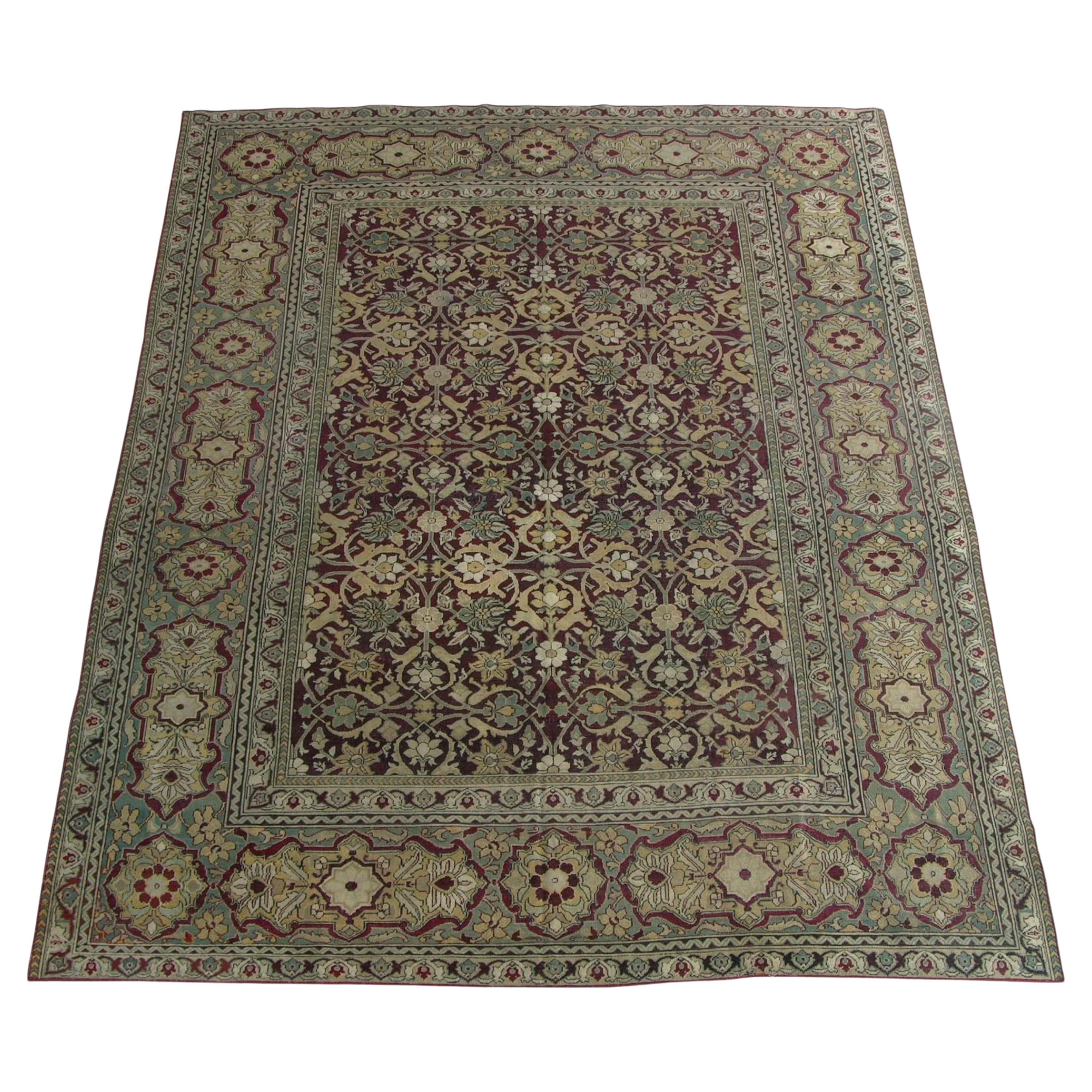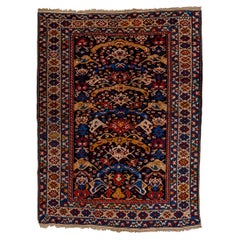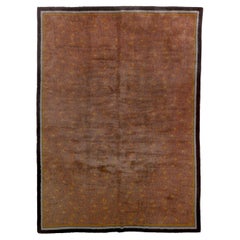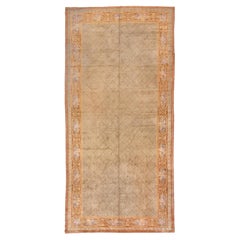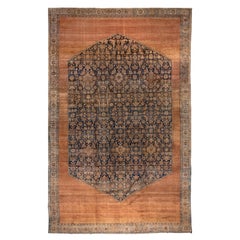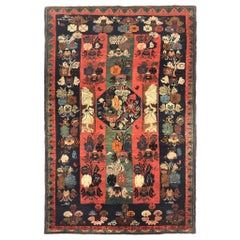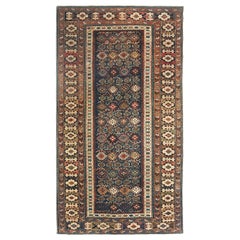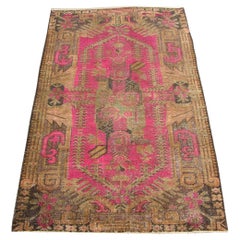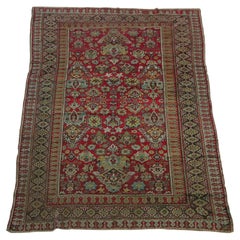Items Similar to Antique Hand Woven Russian Besserabian Rug, circa 1900s
Want more images or videos?
Request additional images or videos from the seller
1 of 9
Antique Hand Woven Russian Besserabian Rug, circa 1900s
About the Item
This southern Russian kilim-tapestry technique carpet shows a golden-tan field with a three echelon pattern of outline cartouches and barbed leaf-forms detailed in sienna, cream and salmon tan. Sienna border with chains of hooked and plain diamonds alternating.
- Dimensions:Width: 89 in (226.06 cm)Length: 150 in (381 cm)
- Style:Bessarabian (In the Style Of)
- Materials and Techniques:Wool,Hand-Knotted
- Place of Origin:
- Period:1900-1909
- Date of Manufacture:1900s
- Condition:Wear consistent with age and use.
- Seller Location:New York, NY
- Reference Number:Seller: C71211stDibs: LU8129233053062
About the Seller
5.0
Gold Seller
Premium sellers maintaining a 4.3+ rating and 24-hour response times
Established in 1979
1stDibs seller since 2023
43 sales on 1stDibs
Typical response time: <1 hour
- ShippingRetrieving quote...Shipping from: New York, NY
- Return Policy
Authenticity Guarantee
In the unlikely event there’s an issue with an item’s authenticity, contact us within 1 year for a full refund. DetailsMoney-Back Guarantee
If your item is not as described, is damaged in transit, or does not arrive, contact us within 7 days for a full refund. Details24-Hour Cancellation
You have a 24-hour grace period in which to reconsider your purchase, with no questions asked.Vetted Professional Sellers
Our world-class sellers must adhere to strict standards for service and quality, maintaining the integrity of our listings.Price-Match Guarantee
If you find that a seller listed the same item for a lower price elsewhere, we’ll match it.Trusted Global Delivery
Our best-in-class carrier network provides specialized shipping options worldwide, including custom delivery.More From This Seller
View AllAntique Shirvan Rug, circa Early 1900s
Located in New York, NY
This west Caspian Bidjov village scatter from the Shirvan/Kuba area shows an ascending, one way design of stylized arching elements, abstract palmettes and a multitude of small C’s i...
Category
Early 20th Century Persian Persian Rugs
Materials
Wool
Antique Swedish Rug by Konstfliten
Located in New York, NY
A very attractive minimal rug made in Sweden, quite rare to be found in the market. The background color develops in alternating textures on the colors of ...
Category
Mid-20th Century Swedish Russian and Scandinavian Rugs
Materials
Wool
Antique English Axminister Art Deco Large Rug, circa 1900s
Located in New York, NY
This long pile, coarsely woven long carpet shows a beige seafoam field with an open diamond lattice allover pattern, within a brown border with trompe l'oeil strapwork forming cartouches enclosing bouquets. A massive carpet...
Category
Antique Early 1900s English Art Deco Western European Rugs
Materials
Wool
Antique Persian Bibikabad Carpet, circa 1900s
Located in New York, NY
The dark blue stepped Herati sub-field floats on the tone-on-tone camel ground with a small hexagon and hooked lozenge pattern. The sand main ground border shows a connected turtle p...
Category
Antique Early 1900s Persian Tribal Persian Rugs
Materials
Wool
Antique Lavar Kerman Carpet, circa 1900s
Located in New York, NY
Of lavar quality, this well-woven SE Persian urban carpet displays a pendanted charcoal medallion enclosing a 12-point ivory palmette Sub-medallion, all on the pale pistachio ground ...
Category
Antique Early 1900s Persian Kirman Persian Rugs
Materials
Wool
Fine Antique Caucasian Karabagh Gallery Rug, Brown Tones, circa 1900s
Located in New York, NY
In a Persian style, this South Caucasian kellegi (long carpet) shows a Herati design with fat leaves dominating small rosettes, all on the light brown ground. Sienna brown main borde...
Category
Antique Early 1900s Caucasian Tribal Caucasian Rugs
Materials
Wool
You May Also Like
Antique Russian Gharabagh Circa 1900s
Located in WEST HOLLYWOOD, CA
Rug Number
28430
Size
3' 8" X 5' 7"
Design
Gharabagh
Collection
Antique/Vintage
Material
Wool
Texture
Pile Weave
Origin
Russia
Age
Antique/Vintage
Category
Antique Early 1900s Russian Russian and Scandinavian Rugs
Materials
Wool
Antique Russian Chichi, circa 1900s
Located in WEST HOLLYWOOD, CA
Rug Number
17218
Size
3' 5" X 6' 2"
Design
Chichi
Collection
Antique/Vintage
Material
Wool
Texture
Pile Weave
Origin
Russia
Age
Antique/Vintage.
Category
Antique Early 1900s Russian Russian and Scandinavian Rugs
Materials
Wool
1900s Antique Khotan Samarkand Rug
Located in Los Angeles, US
Antique Samarkand Rugs: The desert oasis of Khotan was an important stop on the Silk Road. The people of Khotan were expert carpet weavers who produced high quality antique rugs and ...
Category
Antique Early 1900s Other Russian and Scandinavian Rugs
Materials
Wool, Cotton
1900s Antique Indian Amritsar Rug
Located in Los Angeles, US
Antique Amritsar Rugs:
-
The spectacular rugs of Amritsar capture the exotic style of India while incorporating a subtle colonial influence. This convergence of eastern and western s...
Category
Antique Early 1900s Asian Other Russian and Scandinavian Rugs
Materials
Wool, Cotton
1900s Antique French Needlepoint Rug
Located in Los Angeles, US
Needlepoint rugs were created using the traditional needlework weaving technique that is used to make everyday items from furniture to carpets and artwork. However, it has a fascinating history both as a hobby and as an industry. When many people think of carpets, they think of pile carpets or flat weave kilims, but needlepoint has also been used to create beautiful carpets. These carpets are durable and an important part of carpet history.
Archaeologists and scholars consider the roots of needlepoint to have been around 1500 BC. They consider the first needlepoint to include the fine diagonal stitches that were used to sew tents together by the ancient Egyptians. The art eventually evolved into tapestry weaving. However, a tapestry weaving differs significantly from needlepoint in that it uses a loom and vertical warp.
Tapestry weaving is closer to the weaving of kilims and pile rugs than canvas work. However, some still include tapestry weaving in the category of needlepoint because of the fine work that appeared during the late Renaissance. It can have a similar appearance to the untrained eye. Technically, tapestry weaving and needlepoint are not the same, and they do not use the same technique.
The first actual needlepoint rugs and needle-points began to appear in the late Renaissance. Needlepoint is worked by creating stitches on a stiff canvas. The canvas is typically made from jute or linen and is quite durable. Pieces from the Renaissance were used to cover footstools, chairs, pillows, bed headboards, and other furnishings. They were also used as table coverings and wall coverings. You could also find them on many small items such as purses, shoes, and various adornments for clothing.
During the Renaissance, the craft reached a high level of skill, and the designs became incredibly detailed and realistic. They mimicked many of the subjects and styles of famous paintings of the time. They created florals, still life designs, scenes, and geometric tiled pieces. Some of them mimicked the designs found in Persian Carpets.
Needlepoint reached its peak popularity in the 19th century when it was considered a proper occupation for a lady. Needlepoint and embroidery held a similar place in societal status at the time. During this time, the work became finer, with some of the canvas reaching a high level of detail. The level of detail is determined by counting the number of mesh in an inch. During this time petit point by French needlewomen could have a mesh count as high as 45 mesh. This allowed women to create highly intricate designs with incredible levels of detail.
It is possible to find many antique pieces of needlepoint besides rugs. Needlepoint rugs were popular in France and Spain, where the technique was adapted to create highly intricate designs that mimicked the designs in architecture and fashion. They were popular because they were durable, and it could be fashioned into a variety of items. The canvases themselves were durable, and the wool that they used was also strong, which means that many of the pieces were able to withstand daily use. We have many artifacts that have survived from this time period.
Needlepoint rugs are important collectibles because they are different from the pile rugs and kilims that are typically found on the market. Needlepoint carpets are special because they take many hours to create, especially larger works. Needlepoint pieces of any type became popular throughout Europe during the 19th century. It is still a popular hobby today, but perhaps one of the most interesting stories is that of the Portuguese needlewomen of Arraiolos.
The story of these women and their beautiful carpets begins in 1492. Needlepoint was a popular occupation in Spain, which had a large population of Moors and Jews. They were an integral part of Spanish culture. However, in 1492, Queen Isabella of Spain issued a proclamation that gave these ethnic groups the order to pack their bags and board ships headed...
Category
Antique Early 1900s Other Russian and Scandinavian Rugs
Materials
Wool, Cotton
1900s Antique Indian Amritsar Rug
Located in Los Angeles, US
Antique Amritsar Rugs – The spectacular rugs of Amritsar capture the exotic style of India while incorporating a subtle colonial influence. This convergence of eastern and western styles results in an exceptionally alluring appearance that has been beloved by western consumers historically and today. The outstanding old Amritsar carpets were created by influential exporters to fuel the demand for exotic rugs...
Category
Antique Early 1900s Asian Other Russian and Scandinavian Rugs
Materials
Wool, Cotton
Recently Viewed
View AllMore Ways To Browse
Russia Diamond
Antique Russian Chain
Custard Cups
Cuzqueno Paintings
Cy Mann Bar
Cypress Stump Table
Cypress Tree Trunk Table
Cyrk Bear
Czech Crystal Punch Bowl
Dachshund Bottle Opener
Dagobert Armchair
Dah Len
Dale Rogers
Dali Lithography
Dan Johnson Gazelle Chair
Dan Johnson Viscount Chairs
Danbury Mint
Danilo Silvestrin
